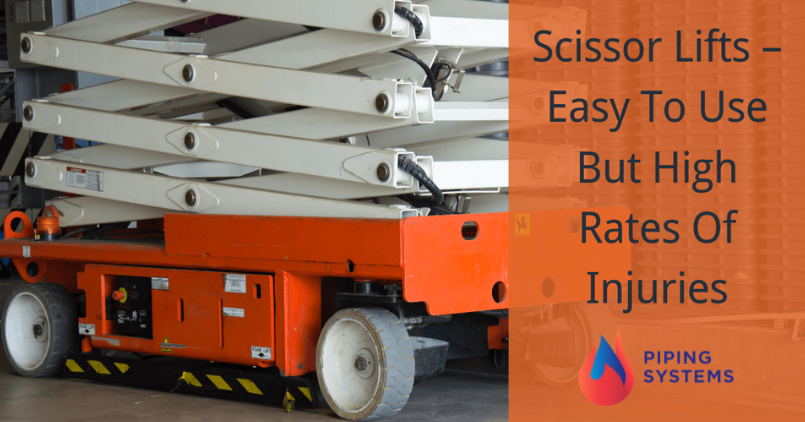Published July 15, 2019

Scissor lifts are a versatile option for moving people and materials vertically in warehouses, inventory rooms, and on construction sites. Unfortunately, they are often used incorrectly and without attention to safety. This results in an increased risk of injuries on the job, and it can also pose life-threatening safety issues that could be prevented with knowledge and training.
Training
Each manufacturer has specific recommendations of the given make and model of scissor lift. It is vital that all employees operating the scissor lift be trained in the specifics for that model, including maximum lift and maximum weight capacity.
Training should include specific information on the use of personal protective equipment (PPE) for fall prevention, stabilization of the lift before use and positioning of the lift for user safety.
Positioning of the Lift
When positioning the scissor lift, it is important to check that the lifted position does not pose a risk of running the lift platform or people on the platform into any type of objects. This includes power lines, overhead structures such as arches, beams or rafters or similar structures. Being aware of the working environment takes just a quick visual inspection, but it dramatically reduces the risk of injuries.
Always make sure the scissor lift is positioned out of traffic areas, or that traffic is stopped while the lift is in use. Moving vehicles or equipment can easily hit or bump the base of the scissor lift, resulting in a greater risk of falls for those on the platform.
Safety Rails
The scissor lift should feature safety rails or guardrails that surround the platform. These rails should not be modified or altered as this can reduce protection. Workers using the lift should be training to only work from the platform, and to never use the rails to stand on or to lean over when the lift is extended.
Leveling and Stability
When preparing to use the lift, it is crucial to make sure the base is both level, as well as stable. The surface should be firm and packed, and the lift should never be positioned close to a drop-off or a change in surface support, such as a paved to dirt surface combination.
The lift should not be moved in the extended position, which is a common practice in many warehouse types of applications. While it takes a few more minutes to lower the lift, move it, and then raise it again, it is also the only option that is safe. The stability of the entire equipment is decreased when it is moving or if the weight on the lift exceeds the load rating.
It is also essential to avoid using scissor lifts in high wind condition. Make use to read the manufacturer’s limitations on outdoor use and the verify wind speed, and wind gusts do not exceed that limitation.